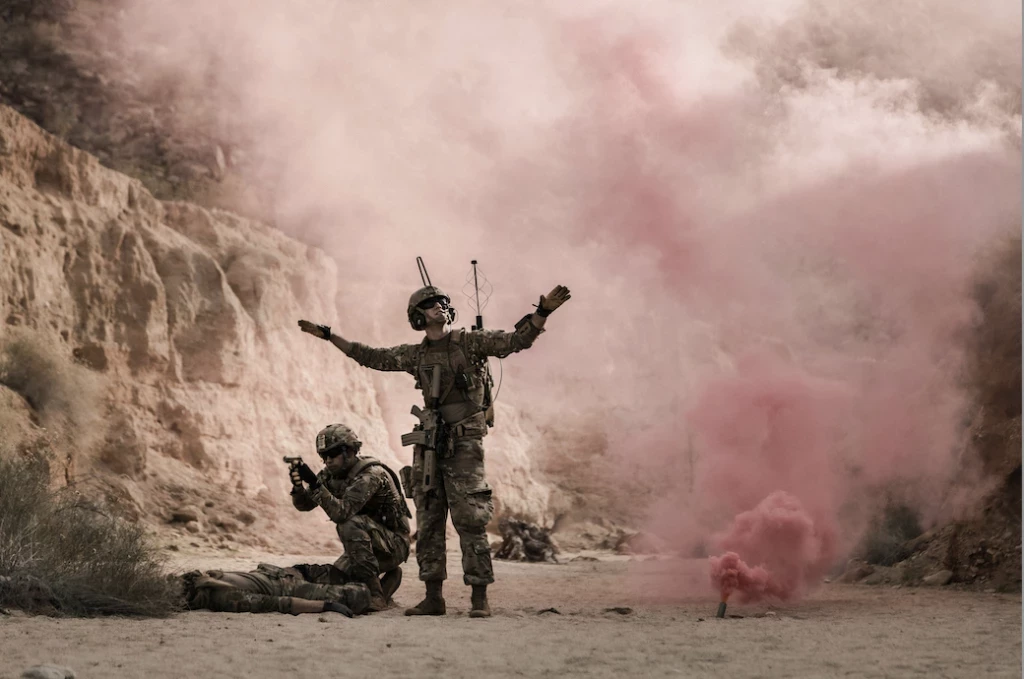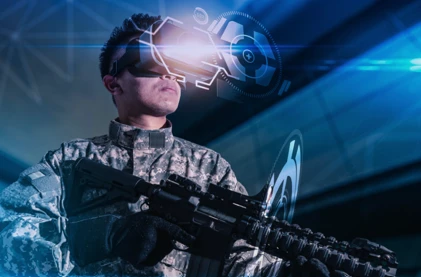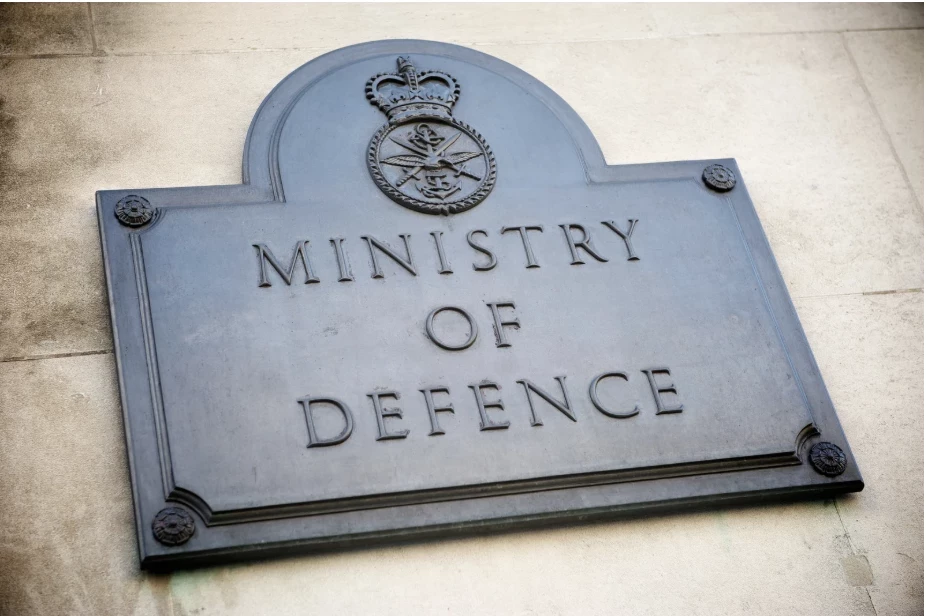Russia's Strategic Nuclear Forces: A Review of Modernisation Plans
Add bookmarkRussia’s strategic nuclear forces, comprising land-based intercontinental ballistic missiles (ICBMs), submarine-launched ballistic missiles (SLBMs) and air-launched cruise missiles, constitute the core of its armed forces. Moreover, Russia’s strategic nuclear forces, in particular the ICBMs of the Strategic Missile Forces (RVSN), are perceived as symbols of its Great Power status, and one remaining area where Russia holds parity with the United States. The modernisation of the strategic nuclear forces thus forms a central component of Russian long-term defence planning; a position highlighted by the number of strategic programmes underway. These include three ICBMs, a new class of ballistic missile-armed nuclear-powered submarine and associated SLBM, and a new strategic bomber. The strategic nuclear forces also occupy a key role in Russian strategy; for example, simulated nuclear strikes are included within major exercise scenarios and strategic assets participate in the frequent ‘snap exercises’ being called by President Putin.
The purpose of this paper is to review the modernisation efforts underway pertaining to Russia’s strategic nuclear forces. In order to do this, the paper first provides an overview of the current arsenal of strategic systems deployed by the RVSN, Navy and Air Force and the role of nuclear forces in Russian strategy. Proceeding from this, the paper examines the new generation of systems currently being deployed or under development to re-equip the strategic nuclear forces. This includes the Yars, Rubezh and Sarmat ICBMs, the Borei-class submarine and Bulava SLBM and the PAK DA (‘Prospective Aviation Complex for Long Range Aviation’) bomber. Finally, the implications of Russia’s strategic nuclear force modernisation efforts are considered.
Russia’s Current Strategic Nuclear Forces
The contemporary Russian strategic nuclear arsenal is to a significant extent a legacy of the Soviet period; more than half of the RVSN’s ICBMs are Soviet-era SS-18, SS-19 and SS-25 systems; eight of the Navy’s 11 SSBNs are Delta III/IV boats built in the 1970s and 1980s; and the Air Force’s Bear and Blackjack bombers were principally built during the 1980s. Nonetheless, the Russian strategic nuclear forces constitute an impressive and potent capability, second only to the United States. Moreover, as will be discussed below, the strategic forces are receiving new systems to replace the currently deployed forces and have also been receiving upgraded systems in order to maintain the effectiveness and credibility of Russia’s nuclear deterrent. For example, the SS-27 (Topol-M), which entered service in 2006, is an upgraded version of the SS-25 (Topol), whilst the RS-24 Yars/Yars-M is a multiple warhead version of the SS-27 (the RS-24 entered service in 2011).
At this stage, a brief summary of the types and numbers of strategic systems operated by the RVSN, Navy and Air Force is required. Older systems are referred to using their Western designation, whilst new systems are referred to using their known Russian designations or project names. Under the terms of the New START (Strategic Arms Reduction Treaty) Treaty signed by the US and Russia in April 2010, the US and Russia can deploy up to 700 ICBMs, SLBMs and bomber aircraft (a further 100 launchers can be classified as non-deployed) with up to 1,550 nuclear warheads (individual bombers are counted towards the warhead count rather than the number of weapons carried). Under the terms of the Treaty, the limits established are to be reached by 5 February 2018 – seven years after the Treaty came into force.
The RVSN currently operates (drawing on data from Pavel Podvig’s authoritative Russian Nuclear Forces Project website and blog) approximately 305 ICBMs comprising 46 silo-based SS-18 missiles armed with up to 10 warheads, 60 silo-based SS-19s with six warheads, 72 road-mobile single-warhead SS-25s, 60 silo-based and 18 road-mobile single-warhead SS-27s, 45 road-mobile and 4 silo-based RS-24 missiles armed with four warheads. Some reports suggest the RS-24 may be armed with up to six or seven warheads. The SS-18s, SS-19s and SS-25s are due for retirement in the 2020s with the SS-27 and RS-24 Yars/Yars-M forming the core of the RVSN’s long-term strength alongside the forthcoming Sarmat and Rubezh ICBMs. The mix of silo-based and road-mobile systems is to be retained; a rail-mobile system, Barguzin, is also to be brought into service by 2020 (see below).
[eventpdf]
The Russian Navy at present operates three Delta III-class submarines and six Delta IV-class boats. The Delta III-class were built during the 1970s and are each armed with 16 SS-N-18 Stingray SLBMs equipped with three warheads per missile: the submarines are coming to the end of their service careers. The Delta IV-class, built during the 1980s, are armed with 16 upgraded SS-N-23 Sturgeon (R-29RMU2/RSM-54 Sineva) SLBMs each equipped with four warheads. A further derivative of the R-29RM missile has been developed and is being deployed on Delta IV boats. The Liner SLBM differs from the Sineva in that it is equipped with up to 10 warheads (the Liner can also be configured with eight or four warheads) and penetration aids for operations against an adversary with missile defence capabilities. The Delta IV-class are intended to remain in service until 2030. The Russian Navy has also begun receiving its new Borei-class ballistic missile submarines. The first of class, Yuri Dolgurukiy was commissioned in 2013 and a further two submarines have been delivered to the Navy although it is believed that only the Yuri Dolgurukiy is currently fully operational with a complete armament of 16 SS-N-30 Bulava SLBMs. The development of the Borei-class and Bulava SLBM has been protracted and especially with regard to the Bulava, difficult. The Borei-class is intended to be the core of Russia’s naval strategic nuclear forces for the next few decades and will be discussed further below.
The Russian Air Force’s Long Range Aviation Command (LRA) currently operates 72 Tupolev Tu-95MS Bear and 16 Tupolev Tu-160 Blackjack bombers in the strategic nuclear strike role. The Blackjack is principally armed with 12 AS-15 Kent (Kh-55) air-launched cruise missiles carried internally; the Bear is, depending on variant (MS6 or MS16), either armed with six AS-15s internally or a total of 16 AS-15s via the carriage of an additional 10 missiles externally, although this does result in a significant reduction in the aircraft’s range. The Bear force is split equally between the MS6 and MS16 variants. The 3,000 km range AS-15 is to be replaced by the Kh-102 cruise missile, an advanced low observable missile with a range exceeding 5,000 km. The Blackjack will, as with the AS-15, carry 12 Kh-102s internally; the Bear, however, can only carry the Kh-102 externally: eight missiles can be carried on four twin hard points. The LRA’s force of 60-plus Tupolev Tu-22M3 Backfire bombers are not counted as strategic nuclear platforms, but do have a theatre nuclear-strike role.
Russia’s strategic nuclear forces occupy a central role in Russian strategy, serving in peacetime to deter threats to, and possible aggression against Russia and its interests. In wartime, the principal objectives for the strategic deterrent forces would be the de-escalation of hostilities, conflict termination on favourable terms to Russia and to threaten an adversary’s ability to wage war. This would be achieved through strikes against an adversary’s strategic military and economic objectives in order to inflict unacceptable damage to the adversary and thereby compel the adversary to cease pursuing his course of action. The importance of the strategic nuclear forces is highlighted by comments made on 29 December 2014 by General Valery Gerasimov, Chief of the Russian General Staff, in a television interview, stating that their development was the Ministry of Defence’s top priority for 2015.
The differing components of the strategic nuclear forces are also regular participants in military exercises – both scheduled and ‘snap’. For example, in February 2015, the RVSN undertook what was described as its largest-ever exercise with more than 30 units deploying across 12 Russian regions, operating in a variety of simulated conditions including against opposing sabotage units and in a post-chemical and biological attack environment. In March 2015, a snap strategic exercise involving units from across Russia was called. As part of this exercise, General Gerasimov paid a visit to a Delta IV-class submarine deployed with the Northern Fleet to inspect the crew’s ability to fulfil operational tasks. Regular patrols by LRA aircraft also contribute to operational training for both conventional and nuclear missions.
The importance of the strategic nuclear forces to Russian strategy is further highlighted by the priority afforded to strategic systems in long-term rearmament plans. Russia intends to comprehensively update its strategic nuclear forces in the course of the next decade with new ICBMs, submarine-based systems, and a new bomber; in addition, development work on advanced capabilities, in particular relating to systems to penetrate an adversary’s missile defences, is also underway.
Re-arming the Strategic Nuclear Forces
Aspects of the modernisation of Russia’s strategic nuclear forces have been noted above, in particular with regard to the entry into RVSN service of the RS-24 Yars ICBM and the entry into naval service of the Borei-class submarine with the associated Bulava SLBM. The purpose of this section is principally to provide an overview of the new ICBMs under development for the RVSN, the future of the naval strategic deterrent force, the PAK DA bomber for the Russian Air Force and interest in new capabilities, in particular manoeuvring warheads and hypersonic vehicles for ICBMs.
As of early 2015, the RVSN had re-equipped approaching half of its missile forces with the new RS-24 Yars. Alongside the Yars, two further missiles are under development: the heavyweight Sarmat and the lightweight Rubezh. The Sarmat, scheduled to enter service around 2020, is intended as a replacement for the SS-18; it will be silo-based and typically armed with 10 warheads. As the replacement for the SS-18, the Sarmat will constitute the high-end of the RVSN’s arsenal, be capable of being fired at a variety of trajectories and equipped with specialised systems. In this regard, the Sarmat could be equipped with manoeuvring re-entry vehicles or a hypersonic vehicle in order to provide an enhanced means of penetrating a missile defence system; it could also be equipped with a conventional warhead as a counter to US efforts to develop a Prompt Global Strike capability. A new lightweight road-mobile ICBM is also under development for the RVSN and due to enter service in 2016: the RS-26 Rubezh. The Rubezh is derived from the RS-24 and can deliver multiple warheads; notably, General Sergei Karakayev, Commander of the RVSN, suggested the RS-26 is significantly lighter than the RS-24. There is speculation that the RS-26 may be intended to provide a breakout capability from the Intermediate Range Nuclear Forces (INF) Treaty, which banned all ground-launched ballistic and cruise missiles with a range of 500 to 5,500 km. The Rubezh has been tested in a single-warhead configuration to a range of 5,800 km and thus qualifies as an ICBM; however, if armed with multiple warheads, the missile’s effective range could be within prohibited INF limits.
The RVSN currently deploys a combination of silo-based and road-mobile ICBMs; it has previously also operated rail-mobile missiles. From 1987 to 2005, Russia deployed 36 rail-based SS-24 ICBMs; the SS-24 was a heavyweight missile armed with 10 warheads: a silo-based version was also deployed. In December 2014, it was announced that a new rail-mobile system would be deployed. The Barguzin will utilise the Yars/Yars-M ICBM, with six missiles equipping one train and constituting a regiment: five regiments will form a division. Development of the Barguzin system began in 2013 and is due to enter service in 2018/19; it is ostensibly a direct response to the US missile defence programme. It warrants highlighting that the RS-24 Yars/Yars-M, Barguzin, Rubezh and Sarmat will provide the RVSN with a streamlined missile force, which apart from the Sarmat, will share a common Yars-based lineage. This is in contrast to the current missile force that consists of the SS-18, SS-19 and Topol-derived missiles (the SS-25, SS-27 and RS-24).
The commissioning of the first of the Borei-class ballistic missile-armed submarines in 2013 and delivery of two further submarines in 2014 has been noted above. A total of eight Borei-class submarines are planned, consisting of three Project 955 and five modernised Project 955A boats; the Borei-class are each armed with 16 SS-N-30 Bulava SLBMs which in turn are equipped with six warheads per missile. The Bulava has endured a particularly troubled development, including suffering a high rate of failure in test launches, resulting in a delayed introduction to service: it remains to be seen whether all issues with the missile have been resolved. Russia has also started to look beyond the Bulava and Borei-class. In December 2014, Vladimir Degtyar, the General Director and Designer of the Makeyev Design Bureau, the company responsible for the Sineva and Liner SLBMs (the Bulava was developed by the Moscow Institute of Thermal Technology), disclosed that initial research work on a prospective seaborne strategic missile complex has begun. Degtyar added that the project’s inclusion in the State Armament Programme through to 2025 was under consideration. Moreover, on 19 March 2015, the Commander-in-Chief of the Russian Navy, Admiral Viktor Chirkov, announced that the defence industry had been tasked with the development of fifth generation submarines (the Borei-class are defined as fourth generation).
The future of the airborne component of Russia’s strategic nuclear forces is envisaged to be a new strategic bomber currently under development by the Tupolev design bureau. This aircraft, the PAK DA, is envisioned to be a low-observable subsonic flying-wing design and capable of carrying a greater payload than the current Tu-160 Blackjack. An initial research and development contract for the PAK DA was agreed between the Russian Ministry of Defence and Tupolev in 2009; the aircraft project was approved in 2013. It is intended that the PAK DA prototype will make its first flight in 2019 with deliveries to the Russian Air Force to begin in the early 2020s. The PAK DA is planned to be capable of undertaking both conventional and nuclear missions and eventually replace both the Bear and Blackjack; it will be armed with advanced long-range cruise missiles such as the Kh-101, Kh-102 and Kh-SD plus a new generation of weapons reportedly under development. Hypersonic weapons may also be integrated with the PAK DA if and when developed. Whether Russian industry can deliver the PAK DA, or the Russian economy enable the acquisition of sufficient aircraft to replace the Bear and Blackjack is uncertain. In the nearer-term, there is also Russian Air Force interest in utilising the Sukhoi Su-34 Fullback theatre strike aircraft in the long-range nuclear role; this would likely involve arming the aircraft with a nuclear-tipped version of the 2,000 km range Kh-SD.
A major priority for Russia, in particular with regard to its ICBM and SLBM forces is the development of measures to penetrate an adversary’s ballistic missile defence systems. The acquisition of extended-range low-observable cruise missiles is one means of countering such a system, as is the development of technologies including manoeuvring re-entry vehicles (MARV) and hypersonic vehicles for ICBMs and SLBMs. Both the US and Russia have pursued MARVs; for example, in the late 1970s/early 1980s the US tested the advanced MARV on its Minuteman ICBM and considered a MARV warhead for the Trident II D-5 SLBM. More recently, China’s new DF-21D anti-ship ballistic missile incorporates a guided MARV payload. In essence, a MARV is designed to alter its trajectory via mechanisms such as hydraulic actuators in order to evade missile defence systems; it can also result in a more accurate delivery platform through correcting its trajectory (as in the Chinese DF-21 which has to attack a moving target at sea). It is likely that Russia will, if it has not already, deploy a MARV warhead option on one or more of its current or future ICBMs or SLBMs. Russia is also actively developing a ballistic missile-launched hypersonic vehicle (as are China and the US), that is, a high-speed vehicle designed to be released by a ballistic missile, capable of adjusting its trajectory and altitude and penetrating missile defences. Such a weapon could be used to deliver a conventional or nuclear payload.
Conclusion
The purpose of this paper has been to outline the current and projected re-equipping of Russia’s strategic nuclear forces. This is a long-term programme and is intended to comprehensively modernise the land, air and sea-based components of Russia’s nuclear deterrent. In addition, the RVSN, Navy and Air Force are either in the course of, or due to receive significant qualitative enhancements to their respective capabilities, including MARV warheads, low-observable cruise missiles and a stealthy strategic bomber. Moreover, the RVSN will expand its land-based force from the current mix of silo-based and road-mobile systems to a triad of silo, road-mobile and rail-based ICBMs, whilst the Rubezh may provide a potential INF breakout capability. The scale of investment in the differing components of the strategic nuclear forces also serves to highlight their central role in and importance to Russian strategy. This is further illustrated with regard to the involvement of strategic nuclear assets in Russian military drills, including as components of major national strategic exercises alongside conventional forces.
A key driver for the modernisation, in particular of Russia’s ICBMs and SLBMs, is responding to the US missile defence programme, and ensuring the continued efficacy of the deterrent force. This is not new; countering anti-ballistic missile defences has been an area of much interest for several decades and particularly during the 1980s in response to the US Strategic Defence Initiative. In this regard, the SS-27, development of which started in the late 1980s, incorporates a number of measures to reduce vulnerability to missile defence systems. The acquisition of the rail-mobile Barguzin has also been linked to the requirement to counter US missile defences through mobility and concealed launch positions (thus reducing an adversary’s warning and detection times). The redevelopment of a rail-mobile ICBM in addition to current silo-based and road-mobile systems also reflects a drive to enhance the general survivability of the RVSN’s missile forces. Similarly, the development of the low-observable PAK DA bomber and Kh-102 cruise missile, plus the acquisition of the Borei-class are intended to provide the Air Force and Navy with more survivable capabilities.
The implications of this expansive modernisation programme are potentially fourfold. Firstly, it will continue to place nuclear forces at the centre of Russian strategy. Secondly, it may result in planned conventional force modernisation plans being either delayed or reduced in scale due to the limited capacity of the Russian defence industrial base to fulfil the requirements of Russia’s rearmament plans. Economic constraints may also force a reduction in the defence budget, in which case nuclear modernisation would likely take priority. This may prompt an increased Russian reliance on the strategic nuclear forces to offset limits in conventional capabilities. Finally, should Russia successfully implement to a significant extent, its projected conventional force modernisation plans alongside those for its nuclear forces, the latter may serve as an umbrella to a more assertive and muscular national policy. In this regard, the scope and simulated operation of strategic nuclear assets in exercises, in particular in major theatre or strategic-level drills, warrants close attention, as does Russian thinking more broadly on the role and utility of the strategic nuclear forces to national policy.
Eastern European states are faced with a variety of airborne challenges to the command of their air space and to their infrastructure and citizens, including the return of more traditional ballistic missile threats, aerial reconnaissance and more general trends in the field of air defence. Learn more about countering these threats by registering for the Integrated Air and Missile Defence Eastern Europe event taking place in Warsaw 28-30 July, 2015.






















